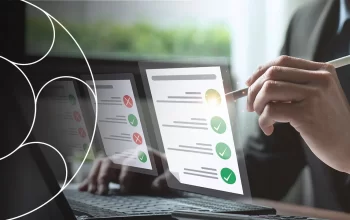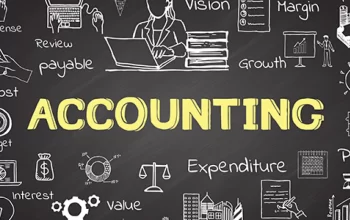So you’re a creator. You’ve built an audience, you’re monetizing your passion, and the money is finally starting to roll in. It’s an incredible feeling. But then, a new, less glamorous reality sets in. The tax forms. The spreadsheets. The nagging question: “How on earth do I account for all these different income streams?”
Honestly, you’re not alone. The financial side of the creator economy is a wild west, a patchwork of platforms and payment methods that traditional accounting never really prepared us for. Let’s dive into the practical steps you can take to get a handle on your finances, stay compliant, and build a sustainable business from your creativity.
First Things First: Untangling Your Revenue Streams
Before you can account for anything, you need to know what “anything” is. Creator income is rarely a single, neat paycheck. It’s more like a bustling marketplace with different stalls, each with its own currency and rules.
The Big Five Income Categories
Most creator revenue falls into a few key buckets. Getting familiar with them is your first step to clarity.
- Platform Payouts: This is your AdSense revenue from YouTube, your subscriber income from Patreon or Twitch, or your TikTok Creator Fund earnings. It’s the money you get directly from a platform for the content you create and the audience you engage.
- Brand Partnerships & Sponsorships: This is the cash from that sponsored Instagram post, the dedicated YouTube video integration, or the brand mention on your podcast. These are typically one-off or campaign-based payments.
- Affiliate Marketing & Commission: That income you get when someone buys a camera through your Amazon link or signs up for a web host you recommended. You don’t get paid a flat fee; you get a percentage of the sale.
- Digital Product & Service Sales: This includes selling your own e-books, presets, online courses, or offering coaching and consulting services. You control the price and the product.
- Direct Fan Support: Think of platforms like Ko-fi or Buy Me a Coffee, or even direct PayPal/Venmo donations. It’s money given directly from your audience to you, no strings attached.
The Nitty-Gritty: Tracking and Categorizing Your Cash Flow
Okay, you know where the money is coming from. Now, how do you catch it all? This is where organization—or rather, a simple, consistent system—becomes your best friend.
Your Digital Toolbox
You don’t need a fancy accounting degree. You just need a method. For many, a well-organized spreadsheet is a perfect start. Create columns for Date, Source, Income Stream Category, Amount, and Payment Method. Update it weekly. It’s a game-changer.
For those who find spreadsheets soul-crushing, consider user-friendly accounting software like QuickBooks Self-Employed or FreshBooks. They can connect to your bank accounts and help you track income and expenses with less manual entry. They also make tax time infinitely easier.
A Quick-Reference Table for Your Income
| Income Type | Common Tax Form | Key Tracking Tip |
|---|---|---|
| Platform Payouts (YouTube, Twitch) | 1099-NEC / 1099-MISC | Track gross amount before platform fees are taken out. |
| Brand Sponsorships | 1099-NEC | Save every contract and invoice; note if payment is “in-kind” (free products). |
| Affiliate Income | 1099-MISC / 1099-NEC | Log the date of the sale, not just the payout date from the network. |
| Digital Product Sales | 1099-K (if via platform like Shopify) | Remember to account for sales tax obligations in your state. |
| Direct Fan Support (Ko-fi, etc.) | 1099-K | Treat this as taxable income, even if it feels like a gift. |
Taxes: The Inevitable Conversation
Let’s talk about the T-word. As a creator, you are almost certainly considered self-employed. This means no employer is withholding taxes for you. It’s all on you. And that can be a brutal surprise if you’re not ready for it.
Understanding Your Tax Obligations
Here’s the deal: you’re responsible for paying income tax and self-employment tax (which covers your Social Security and Medicare contributions). This is why setting aside a portion of every single payment you receive is non-negotiable.
A good rule of thumb? Stash 25-30% of your net income (that’s after expenses) in a separate savings account. Think of it as money that’s already spent. Because, well, it is.
The Magic of Deductions: Your Financial Best Friend
This is the silver lining. As a business, you can deduct “ordinary and necessary” expenses. This lowers your taxable income, which means you pay less in tax. It’s not about evading tax; it’s about paying your fair share, and not a penny more.
- Home Office: If you have a dedicated space for your work, you can deduct a portion of your rent, utilities, and internet.
- Equipment & Software: Your camera, microphone, lighting, editing software subscriptions, and even the cost of this accounting app? All deductible.
- Education: That online course you took to improve your video editing? It’s a business expense.
- Marketing & Promotion: Costs for running ads for your channel or boosting posts count.
Keep your receipts. Seriously. Use a scanner app on your phone and a dedicated folder in the cloud. When tax time comes, you’ll be thanking your past self.
Beyond the Basics: Building a Sustainable Financial Future
Getting your accounting in order isn’t just about surviving tax season. It’s about seeing the bigger picture of your business. When you know your numbers, you can make smarter decisions.
Which income stream is actually the most profitable when you factor in the time spent? Maybe that sponsored post that paid well took 20 hours to create, while your affiliate links earn money while you sleep. Your numbers will tell you that story.
This clarity allows you to plan. To invest in better gear. To maybe even hire an editor or a virtual assistant. It transforms you from someone who just makes content into a true creative entrepreneur.
The Final Balance
Look, managing the finances of a creator business can feel overwhelming. It’s a world away from the creative work that likely fuels you. But here’s a different way to see it: this isn’t a distraction from your art. It’s the foundation that allows your art to thrive long-term.
Taking control of your accounting is, in its own way, a profoundly creative act. It’s about building a structure—a stable, predictable, and resilient structure—upon which your wildest creative dreams can safely be built. And that’s a legacy worth tracking.





